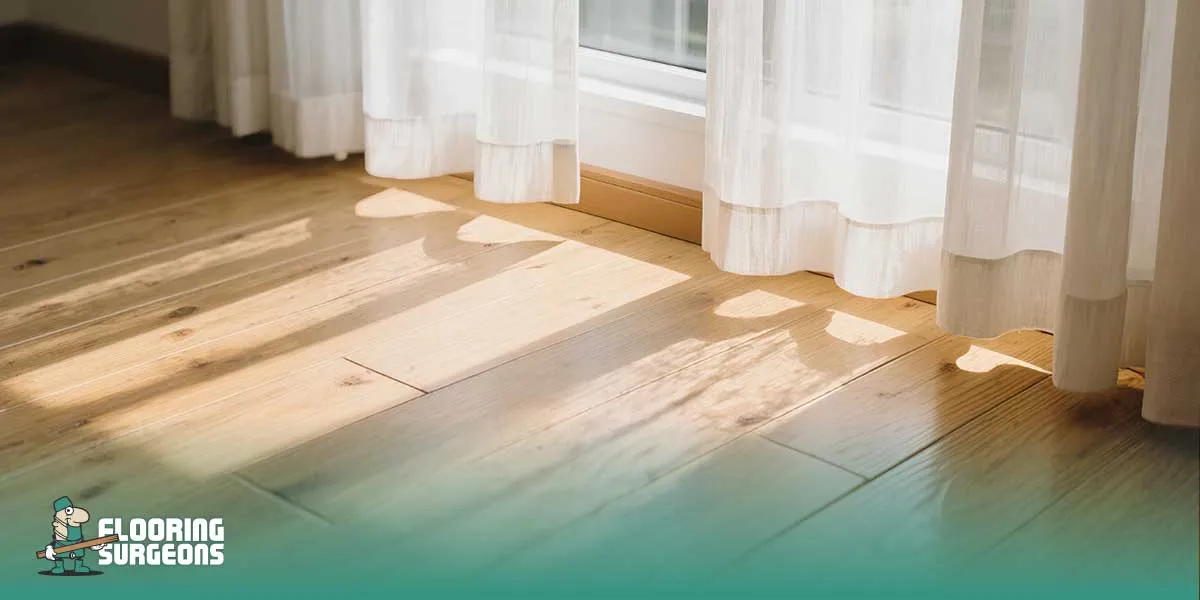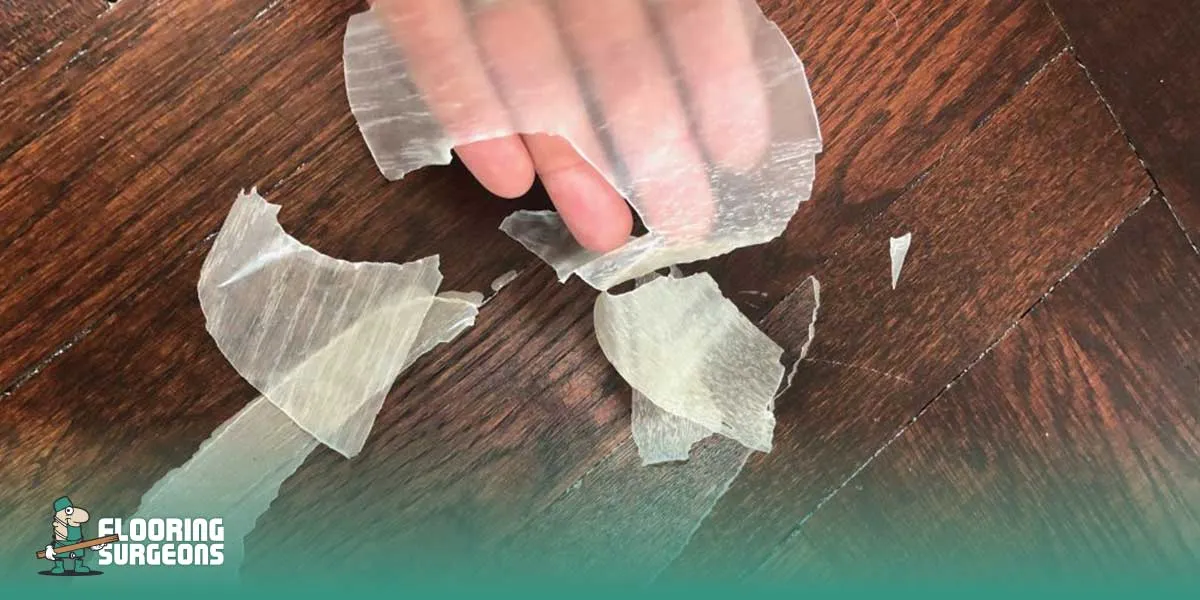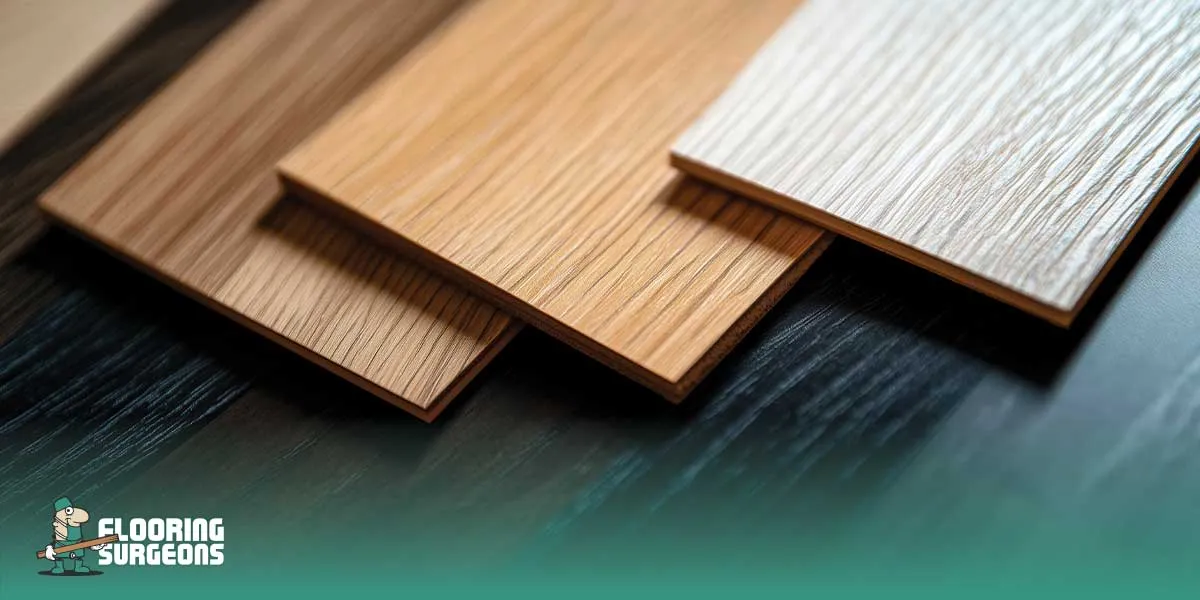Everybody knows how much solid wood flooring can elevate the aesthetic of any home. However, as beautiful as it is, it requires careful maintenance. Solid wood flooring can last a lifetime, but unlike laminate flooring, they are particularly vulnerable to moisture, scratches, and general wear and tear, making routine maintenance essential. The key to keeping it stylish and extending its lifespan is using the correct cleaning tips and techniques. Using the wrong method can risk durability and dull its shine. In this guide, we’ll cover everything you need to know about cleaning solid wood floors, with step-by-step instructions to ensure they stay as flawless as the day they were installed.
Maintaining your wood floors in top-notch condition is of great importance and for that reason, you should know how to clean solid wood flooring properly. Caring for the wood floors will help protect its finish and shield it from harmful dirt and moisture. Additionally, it will enable the wood to remain beautiful and blemish-free for a long time to come. So if you want to know how to clean wood floors naturally and safely, it’s advisable to use simple eco-friendly solutions which do not harm the wood surface. The best natural ingredients to clean your wood floors include vinegar, water, and mild soap.
If you’re wondering how do you clean wood floors naturally, the best approach is to use natural cleaning agents that are gentle on the wood and effective at removing dirt and grime. By adopting how to clean hardwood floors naturally, you can preserve the wood’s shine and extend its lifespan without resorting to harsh chemicals.
What is Solid Wood Flooring?
Solid wood flooring comes from trees, most commonly oak, maple, or walnut. Each plank is cut directly from the tree trunk, then shaped and finished, preparing a durable and elegant flooring option. Unlike engineered wood, which consists of multiple layers of bonded wood veneer, solid wood is more sensitive to moisture and abrasive cleaning products, so it is important to know how to clean solid wood flooring correctly.
If you’re asking how can I clean my wood floors, it’s essential to use gentle cleaning methods to avoid damaging the natural wood surface. Knowing how to clean solid wooden floors properly will help preserve their beauty and ensure they remain in top condition for years to come.

Daily Maintenance Tips for Solid Wood
Daily maintenance and dust removal help prevent scratches and maintain a clean appearance. The best way to achieve this is to vacuum your solid wood floor first before using other cleaning tools.
Eco-friendly cleaning solutions are a natural way to clean hardwood floors and keep them looking their best. These gentle, non-toxic cleaners are safe for the environment and won’t harm your floors. They can also help to preserve the shine of your hardwood floors without the use of harsh chemicals.
If you have pets, you may need to know how to clean hardwood floors from dog urine. With the right approach, you can remove any stains or odors and keep your hardwood floors looking great.
For more tips on maintaining laminate floors in high-traffic areas, check out the page on Maintaining Laminate Floors in High-Traffic Areas.
Vacuuming
Some dirt and grit can act like sandpaper and wear down the surface of your flooring over time. Regular vacuuming helps prevent marks and scratches. It also ensures that mopping is safe and more effective. Always set your vacuum to the “hard floor” setting to avoid damaging the wood.
Sweeping and Dusting
After vacuuming, you can use a microfiber dust mop with peace of mind to remove any remaining dust and debris. For best maintenance, dust your floors at least once a day, especially in high-traffic areas.
How to Clean Solid Wood Flooring: A Step-by-Step Guide
- Step 1: Sweep or Vacuum the Floor Sweep or vacuum the floor to remove dust, dirt, and debris. This will prevent these particles from scratching the floor during cleaning.
- Step 2: Mop the Floor with a Damp Cloth Dampen a mop in water (do not soak it) and wring out excess liquid. Mop the floor using the damp mop, making sure to go over any spots or stains. Allow the floor to dry completely before walking on it.
- Step 3: Rinse the Floor Rinse the floor with clean water using a sponge or bucket of water. This will help remove any residue left behind by the cleaning solution.
- Step 4: Dry the Floor Thoroughly dry the floor using a towel or cloth. Ensure that all the moisture is removed to prevent damage to the wood.
- Step 5: Polish or Wax the Floor (Optional) If desired, you can polish or wax the floor after cleaning. This will give it a nice shine and help protect it from future dirt and debris.
- Step 6: Repeat As Necessary Repeat steps 1-5 as often as needed to keep your solid wood floors looking clean and shiny.
After following these basic cleaning steps, you might want to consider using natural, eco-friendly cleaning solutions to maintain the beauty of your solid wood floors. Let’s take a look at some of the best natural methods for keeping your floors clean and shiny without harsh chemicals.

Best Natural Methods for Cleaning Solid Wood Floors
Natural methods can be an excellent way to clean your solid wood floors without harsh chemicals, keeping them looking beautiful while also being eco-friendly.
- Vinegar and Water Solution: One of the most popular natural methods is how to clean hardwood floors vinegar. Simply mix 1/4 cup of vinegar with a gallon of warm water. Use this solution to mop the floor gently, ensuring you don’t over-saturate the wood.
- Essential Oils for Shine: To add shine to your wood floors, consider adding a few drops of essential oils like lemon or lavender to your vinegar-water solution. This will leave your floors looking shiny and smelling fresh.
- Baking Soda for Tough Stains: If your floor has tough stains, how to clean hardwood floors that are really dirty can be tackled with a paste made from baking soda and water. Apply the paste to the stain, let it sit for a few minutes, and then gently scrub it off.
| Method | Description | Best For | How to Use |
| Vinegar and Water Solution | A natural, cost-effective solution. | Regular cleaning, streak-free results | Mix 1/4 cup of vinegar with 1 gallon (3.79 l) of warm water. Mop and dry immediately. |
| Baking Soda Paste | Tackles tough stains and deep cleaning. | Cleaning dirty floors or tough stains | Make a paste with water and baking soda. Apply to stain, let sit, then scrub. |
| Essential Oils | Adds shine and fresh scent. | Maintaining shine and fragrance | Add a few drops of essential oils to your vinegar-water solution. |
| Pet Urine Solution | Effective for cleaning pet urine stains. | Homes with pets | Mix 1 cup (0.24 l) of water with 1 cup (0.24 l) of vinegar to neutralize odor and stains. |
How to Clean Hardwood Floors Without Streaks
Cleaning hardwood floors can sometimes leave streaks behind, but with the right techniques, you can avoid this. Follow these tips for streak-free results:
- Use the Right Mop: Avoid using a traditional sponge mop. A microfiber mop is ideal for streak-free cleaning because it absorbs moisture and dirt more effectively.
- Don’t Over-wet the Floor: When mopping, ensure the mop is damp, not soaking wet. Excess moisture can leave streaks and cause the wood to warp over time.
- Clean in Small Sections: To prevent streaks, clean one section at a time, and immediately dry it with a soft cloth or towel.
- Vinegar and Water for Streak-Free Shine: How to clean hardwood floors with vinegar is a popular method for streak-free cleaning. Simply mix a small amount of vinegar with warm water, and mop in small sections, drying the area immediately after cleaning.
Now that you’ve learned how to clean your hardwood floors without streaks, it’s important to also know how to handle any spills or stains that might occur. Let’s go over some quick and effective ways to clean up any messes before they cause long-term damage to your floors.

How to Deep Clean Your Hardwood Floor
If you remove stains when they happen, your floor won’t accumulate deep dirt and stains as easily. However, over time, a build-up of dirt, oil, and grime is inevitable and requires a deeper cleaning. Here’s how to clean solid wood flooring for stubborn spots.
First, you should learn how to clean hardwood floor stains. You can remove light stains with a damp cloth and a little mild soap. Stubborn stains can be cleaned with a paste of baking soda and water that is rubbed gently into the stain and then scrubbed with a soft brush. If you want to know how to clean a solid wood floor deeper, you can use a steam cleaner made for wood floors.
Be careful to not use too much moisture, and follow the instructions carefully. You can also mop the floor with a solution of vinegar and water to remove dirt. Last, you may need to know how to clean hardwood floors after removing carpet. Begin by sweeping or vacuuming thoroughly, to remove any dirt and debris that may have been left behind by the carpet. Mop with a gentle wood floor cleaner or a vinegar-water solution.
Selecting Appropriate Cleaners
Appropriate cleansers protect the wood’s natural finish and prevent it from drying out. It’s always recommended to follow the instructions on any commercial floor cleaner to ensure it suits your specific flooring type and that you’re applying it correctly.
Use pH-neutral cleaners free from harsh chemicals, thus minimizing the risk of damage. Blending a few drops of hardwood flooring cleaner with warm water is also one of the effective cleaning solution.
Mopping Techniques
Solid Wood Flooring requires careful mopping. This is because it is highly absorbent of moisture. Therefore, always ensure that you use a damp microfiber mop rather than a soaked onetain.
For stubborn spots or stains, use a lightly dampened cloth with a small amount of wood floor cleaner and then dry the floor immediately after mopping using a soft, dry cloth or towel.
For the best protection and performance of your solid wood floors, don’t forget the importance of a high-quality underlay. Explore our range of Underlay For Solid Wood Flooring to enhance durability and comfort beneath your beautiful floors!
Handling Spills and Stains on Solid Wood Flooring
If water spillages are left on the surface for an extended period, it could heavily damage your solid wood flooring. The best approach is not to allow any water to ring or spillages for a long time, and to wipe it immediately. For stubborn stains, you can try gently rubbing baking soda on the area and then wipe it with a damp cloth.
To keep your floor in the best condition, learn how to clean solid hardwood floors after a spill. Always dry the surface thoroughly, so moisture doesn’t have a chance to penetrate the wood. Use a gentle cleaning solution for regular floor maintenance, too.
Learn how to clean solid wood floor stains in a hurry, as well. Blot up messes quickly so they don’t set into the finish. If the stain is particularly stubborn, apply a wood floor cleaner for deep cleaning.
Preventing Common Floor Damages
Taking preventative measures to prevent dirt and scratches can significantly extend the life of your flooring and make it easier to clean.
- Use house slippers instead of shoes to reduce dirt and possible scratches
- Use felt pads or furniture coasters and place rugs or mats in high-traffic areas.
- Keep indoor temperatures and humidity consistent to minimize flooring expansion and contraction. In humid weather, consider using a ceiling fan or air conditioner to speed up the drying process.
- Keep pet toenails trimmed and filed.
- Always lift vases, furniture, and other items never drag them across the floor
By taking these simple steps, you can protect your floors from common damages and keep them looking beautiful for years. And when it’s time for a floor upgrade or installation, make sure to choose the right Flooring Adhesive for a secure and long-lasting bond!
If you’re wondering how to clean hardwood floors that are not sealed, it’s important to use minimal moisture and gentle cleaning methods to avoid damaging the wood. Additionally, knowing how to clean wood floors without damaging them is key; always use a damp mop, not a soaking wet one, and dry the floor immediately after cleaning to preserve its finish.
Addressing Specific Issues
To know how to clean solid wood flooring properly, you must know the type of stain, scratch, or dirt. Light scuffs can often be mopped easily. Stubborn stains require a little more pressure and attention to remove. Forget harmful cleaning myths, such as using vinegar to clean the wood floors. According to NWFA vinegar acidity can break down the wood’s finish over time.

How to Clean Solid Wood Furniture to Match Your Floors
Maintaining your solid wood furniture is just as crucial as caring for your wooden floors. Regular cleaning and using the proper techniques will ensure both your furniture and floors continue to shine. To clean solid wood furniture, start by dusting it regularly with a soft cloth to prevent dirt build-up. You can also use a mild soap solution or a specially formulated wood cleaner for a deeper clean. If you’re curious how to clean hardwood floors and make them shine, a similar approach can be taken for your furniture by polishing it with a wood-specific shine product to restore its glow.
To prevent streaks and achieve a flawless finish, whether on floors or furniture, it’s essential to know how do you clean wood floors without streaks. The same technique applies when polishing furniture; wiping off excess cleaner with a microfiber cloth helps prevent streaks and allows for that perfect shine. For floors, it’s crucial to understand how to clean hardwood floors without streaks by using the right amount of cleaning solution and drying the surface immediately.
For both furniture and floors, a consistent routine of light cleaning and occasional deep cleans will help keep everything looking pristine. Finally, if you’re wondering how to clean wood floors to make them shine, using a combination of water and vinegar or a wood-specific cleaner will enhance the natural beauty of the wood, giving both your floors and furniture a vibrant, glossy finish.
For expert advice and top-quality products to maintain the beauty of your wood floors, check out Flooring Surgeons for all your flooring needs.
Just as you take care of your solid wood furniture, it’s important to care for your wooden floors, too. Over time, your solid wood floors may require refinishing or restoration. Let’s explore how to restore and refinish your floors to bring back their original beauty.
Restoring and Refinishing
Whilst a regular cleaning routine can extend the durability of the flooring, over time, your floor needs to be recoated and refinished. The best solution is to call professionals, but you may prefer DIY recoating. Choosing between DIY and experts depends on the flooring’s condition. For deep scratch damage, it is better to leave it to the experts. However, for minor damage, you may be able to get away with restoring it yourself if you are confident enough.
Conclusion
Cleaning solid wood flooring doesn’t have to be complicated, but it does require proper techniques. Daily dusting, weekly vacuuming, and appropriate deep cleaning methods can protect your floors from damage and preserve their beauty for decades. For best results, always use cleaning products designed specifically for hardwood floors and avoid excess moisture, which can lead to warping. Thinking about giving your hardwood floors a fresh new look? Visit our store or contact our experts today to find the perfect fit for your home!
The beauty of your floors is an attractive part of your home that you should be sure to maintain. How do you clean hardwood floors? It’s a question that many people often ask. There are special considerations if you have wood floors that are not sealed. If your floors are unsealed, you should make sure to never use a soaked mop, and should instead use a damp mop. You also should know how to clean solid wood furniture if you own these pieces as well.
Cleaning your floors can be easy, but always remember how to clean wood floors so that you do not damage them. Using a microfiber mop and not using harsh cleaners can ensure your floors are not scratched or otherwise damaged during your cleaning. If you are looking for the best way to clean solid wood floors, a combination of vinegar and water is a great homemade solution to keep your floors clean and looking their best.
Use these tips and your home’s solid wood pieces can look their best for many years, increasing the beauty and warmth of your home. Looking for more tips on how to maintain your floors? Check out our expert guide on laminated floors cleaning.
















